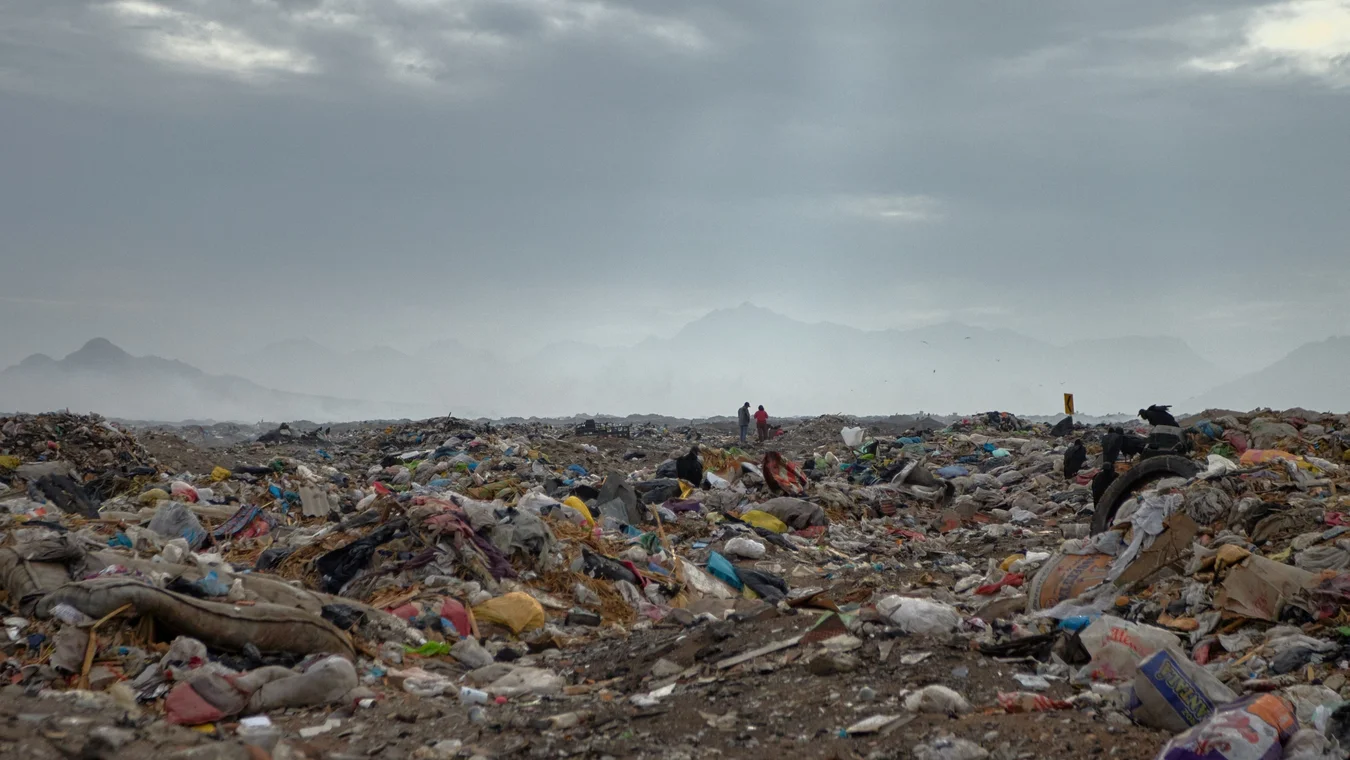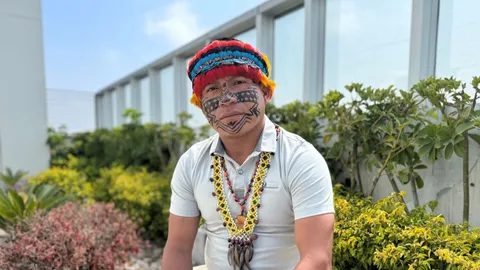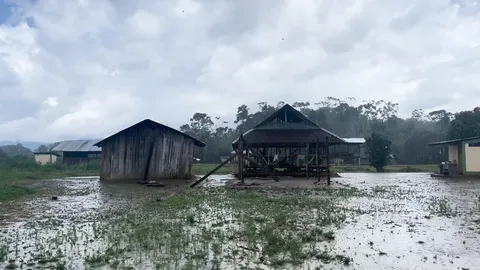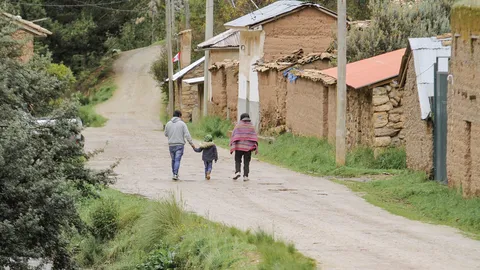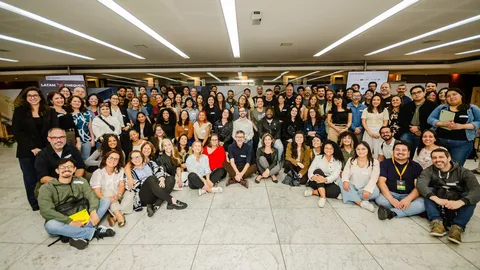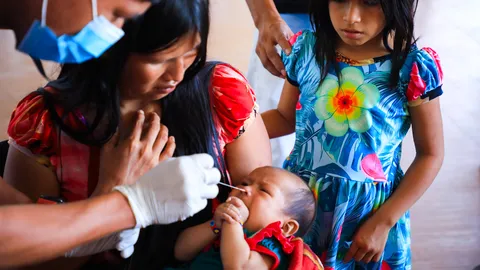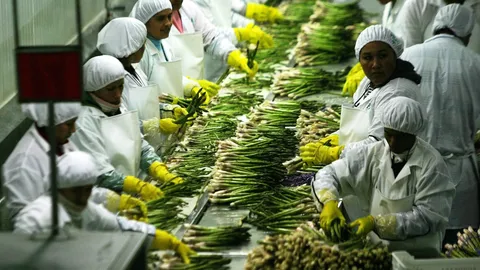From afar, the largest waste dump in Peru looks like a smoky mass, like the surface of a volcano when it goes out completely. On one side is the kind of fog, the smoke caused by the combustion of garbage, making it difficult to spot the hills around. On the opposite side, hundreds of vehicles cross the bridge of the Panamericana Norte, the road that connects Lambayeque to other regions in the country. The bridge is the primary access to the dump, but with each step one takes closer to it, it is easy to feel disoriented and small among the piles of waste.
A person over five feet tall walking alongside the vast mountains of garbage will certainly feel small; there are tons of waste here. The dump covers an area of 307 hectares, the size of Lince, one of Lima's districts with 55.000 inhabitants. However, the Mayor of Reque in the district of Lambayeque believes the dump sits on a more extensive area, exceeding 400 hectares.
It is not clear how long has this illegal landfill been here. In 2015, the Environmental Assessment and Monitoring Agency (OEFA), part of the Minam, found out that waste from the districts of Chiclayo, José Leonardo Ortiz, La Victoria, and of course, Reque, had been dumped here for more than 50 years. Since then, the municipalities of Zaña, Lagunas, Nueva Arica, and Puerto Eten have also followed the old custom of throwing away garbage in the open.
From July 1, access to the dump has been blocked by a gate built by waste pickers who have worked there for decades. They decided to stay at the site after officials from the municipality of Chiclayo announced that they would be executing an order issued by OEFA to close the dump permanently. The order also prohibited other districts from using it. Soon after, no more municipal trucks came to the site. Now, to one side of the gate, a small makeshift tent made of sticks and cloth has been erected, with a flag on top, signaling that the dump is now waste collectors' territory.
A 22-year-old boy is in charge of guarding the entrance to the dump. He has small eyes and a yellow cloth covering his mouth. Therefore, it is difficult to understand him when he speaks using disconnected phrases. In any case, every time he receives the order to let in trucks, cargo tricycles, and motorbikes, he disappears from our view. He is a waste collector and began working in the dump thanks to Francisco Sánchez, whom everybody calls by his nickname "Pancho."
The boy has written Pancho's telephone number on a piece of cardboard with white paint to give to any intruder who tries to enter the dump site. I dialed the number, but Pancho was not on the site. The boy tells me he is not here today because his leg hurts.
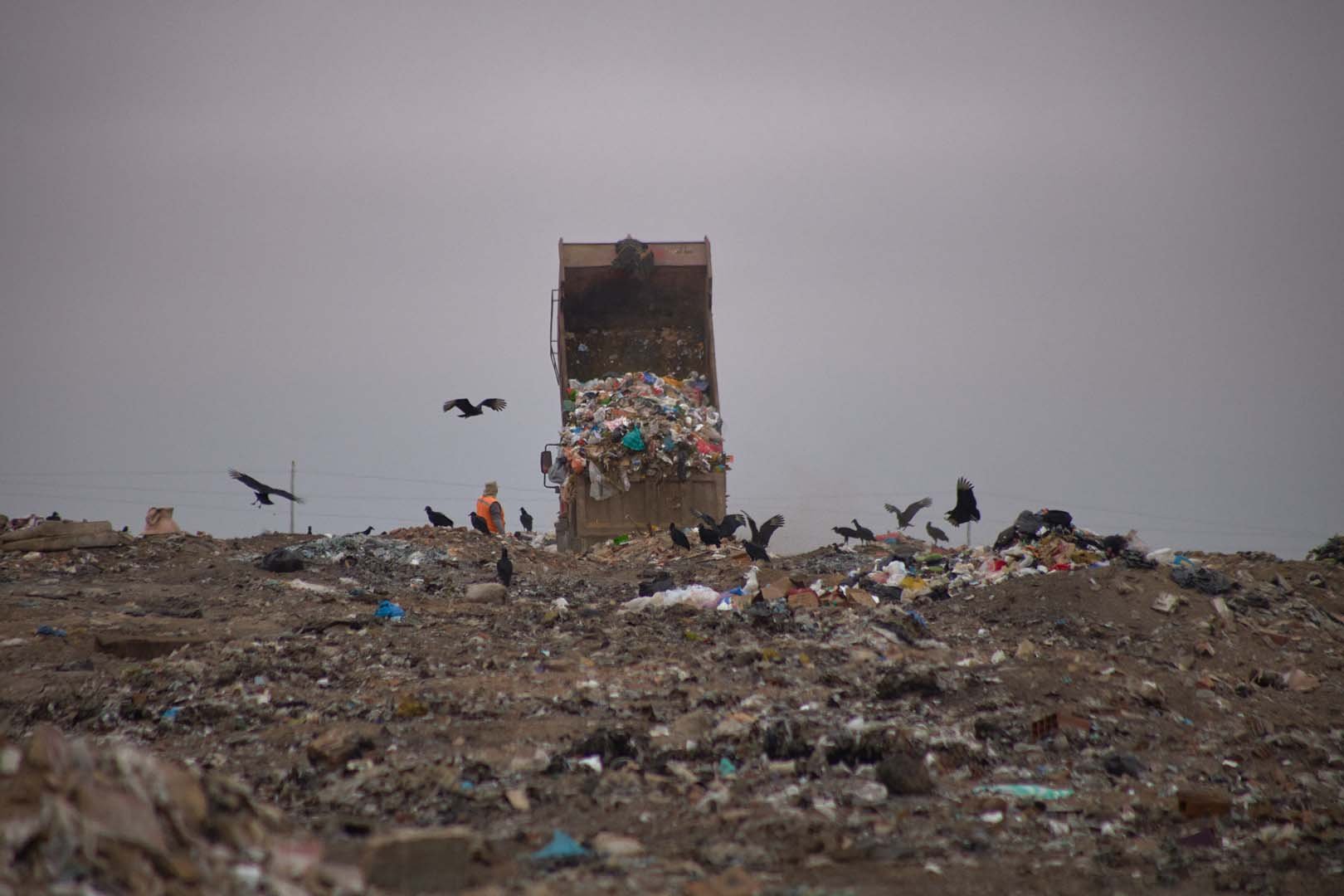
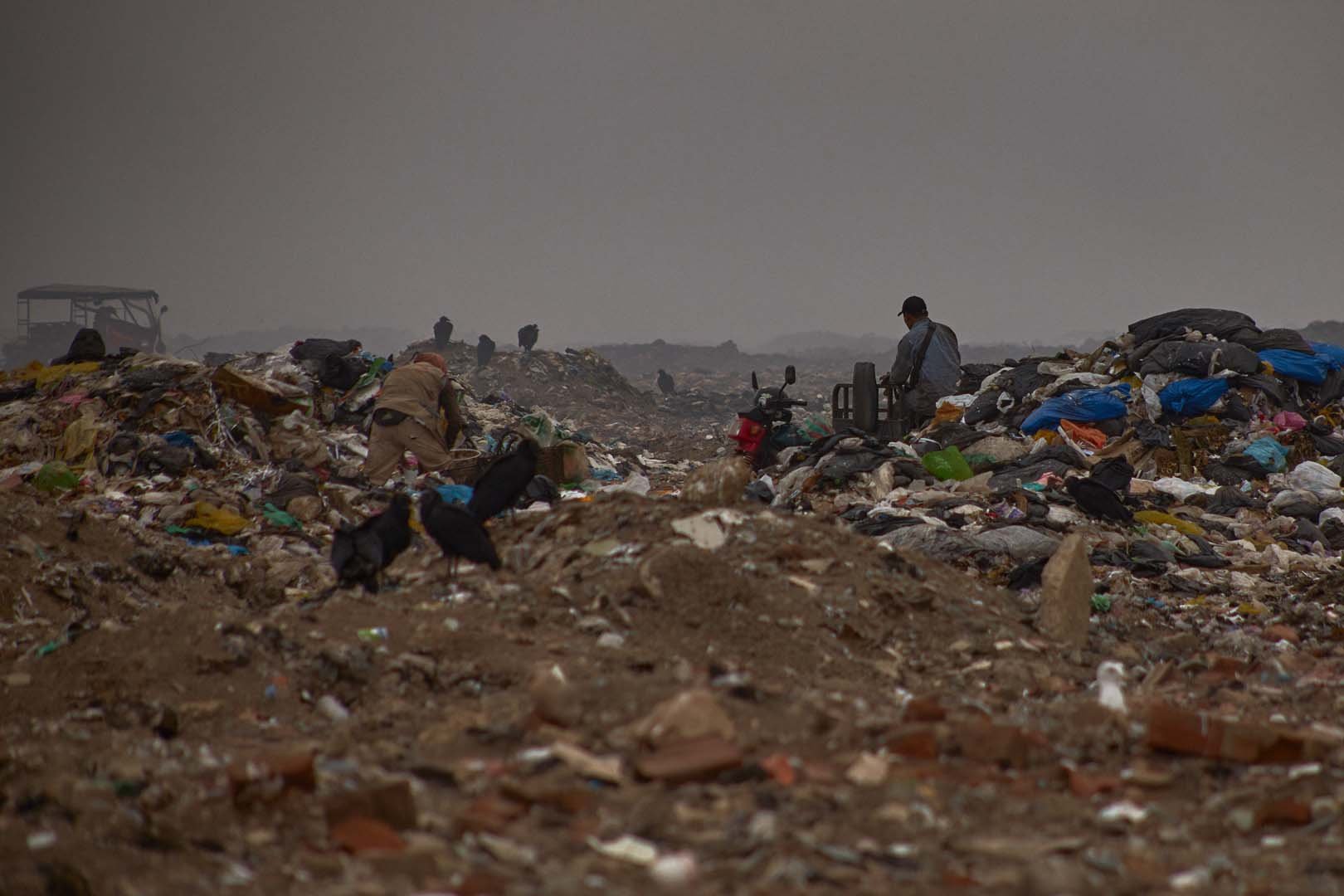
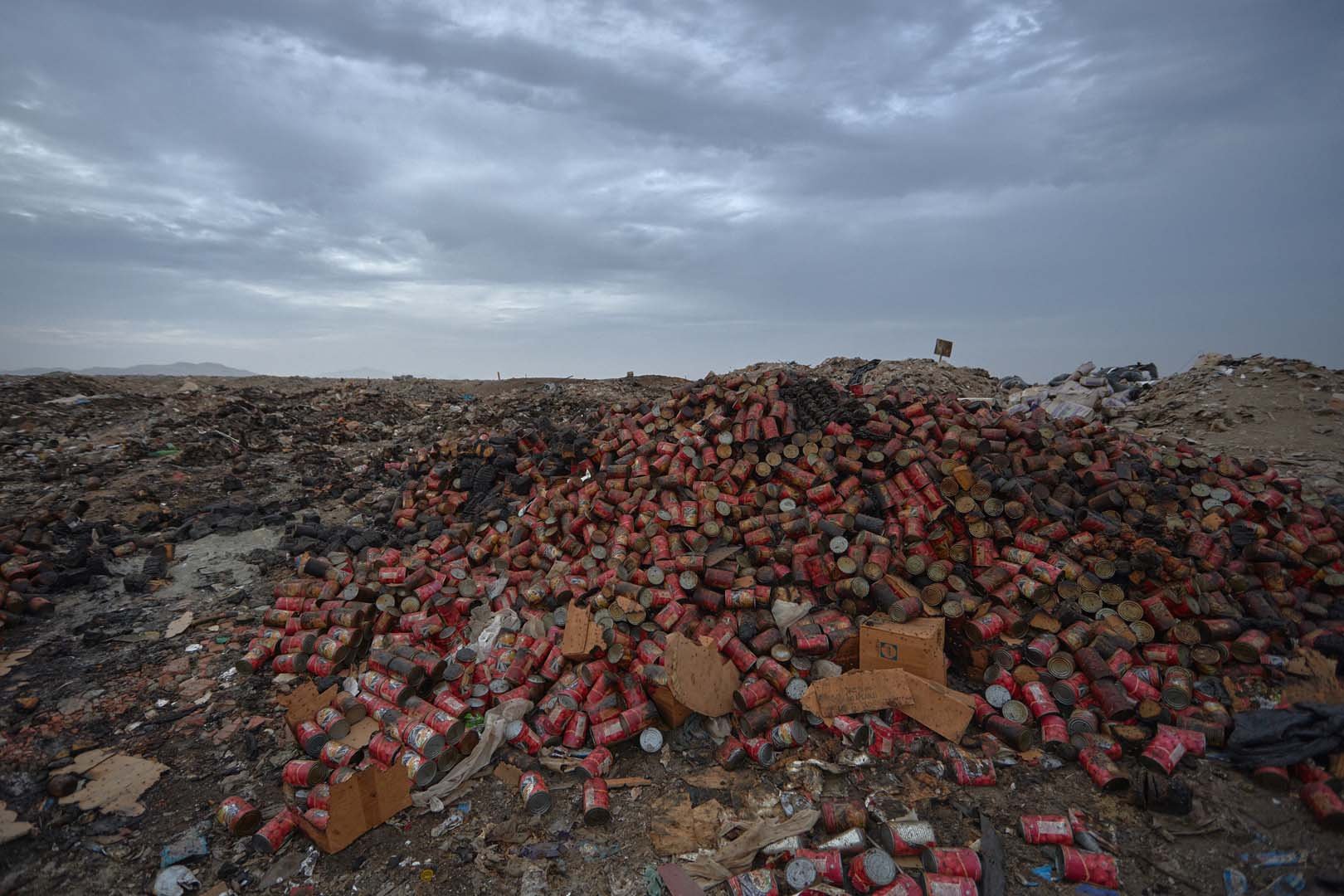
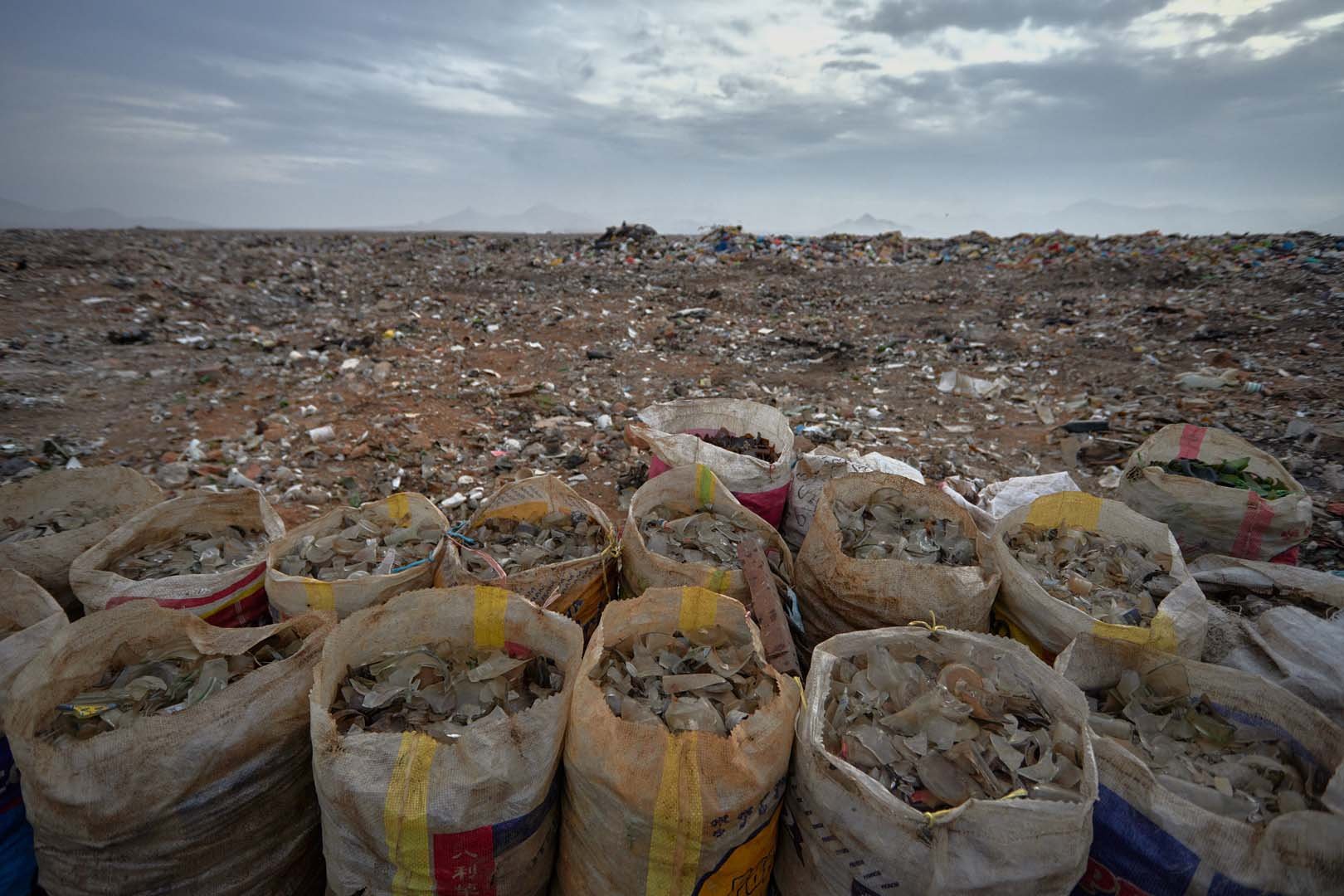
In a previous visit to the dump, before the OEFA announced its closure, Francisco had allowed me to poke around his work. Dressed in a dark and heavy jacket, he explained to me in his rough voice the dump's basic rules. His work week was from Monday to Saturday. By the time he arrived at the site, around 6 am, the municipal trucks would have already dumped their garbage in the spaces assigned to every waste collector. Given the site's vastness, the different dumping places can only be spotted from afar by the silhouette of the waste collectors and the humble homes built very close. The area is like a labyrinth where everything looks almost the same. It is a space full of bags filled with broken glass, carrion birds flying around, and the squeaking and crunching noise of all that garbage when the waste collectors walk over it.
As I talked to Francisco, more trucks arrived at the dump. Big vehicles - dumpers and compactors- rolled around through the waste. They dropped big plastic bags, sometimes mixed with remains of building materials, into the thick piles of garbage below. In the evening, the waste collectors assigned to the night shift would use their flashlights to guide the last trucks and empty their waste content on the dump.
On one occasion, one of the waste collectors told me he used to pay S/35 ($9.05 USD) to get the waste to the exact place where he worked. It was easiest for the municipal truck drivers to avoid going too far into the dump because the further they would go, the greater the fuel expense. This could explain why garbage has accumulated in some parts of the landfill over the years while there is less waste in others.
"I don't have time (to talk)," said one of the waste collectors who accompanied Francisco during my first visits. While there, he never seemed interested in what we were discussing. He just pulled the plastic bags that piled up with a rake. Then I understood his impatience: it probably took him ten hours to make a maximum profit of S/50 ($12.93 USD) by selling some of the materials he could rescue from the garbage. On other days, he would only get S/40 ($10.34 USD).
"A law urges municipalities to offer incentives to waste collectors, but they don't do it. Before, we used to buy the oil for the machinery. Once, we even bought batteries for the municipal trucks to replace the ones someone stole from their vehicles," Francisco recalled. For a long time, there was a certain complicity between the truck drivers and the waste collectors, but the relationship had its ups and downs. Often, waste collectors accused the drivers of intruding in their trade, separating part of the garbage and keeping things for selling later, leaving less stuff in the dump."
Segundo Carrero, a younger waste collector, earned between S/30 ($7.76 USD) and S/35 ($9.05 USD) net daily. After parking his cargo bike, he would change into working clothes to do the picking from 8 am to 5 pm, plus a pair of black boots and a hat to protect himself from the sun. "The most we can get out of the garbage is scrap; this is because the municipal drivers take away the plastic, cardboard, and paper to sell it as merchandise," Segundo explained before the start of his work day. However, he quickly acknowledged that the number of informal waste pickers has decreased during the pandemic.
-Most of them are gone now. They work as moto-taxi drivers or in chacras (small agricultural plantations). So you see, Reque is not a district with many employment opportunities.
-I imagine that there was a competition between you and the municipal truck drivers for the plastic and the cardboard, I told him.
-Sure. Before the pandemic, we had an agreement with the municipality of Chiclayo by which they would send us the trucks full of recycling stuff, but they wouldn't take away anything from us.
After the government lifted the restrictions imposed during the COVID-19 pandemic, Segundo returned to work at the dump, still fearful. This year he has not been wearing masks or gloves, for that matter. He risks cutting himself with the broken glass found in the garbage. His work options are limited. Because he did not finish secondary education, he lost other jobs. Despite that, at some point, he managed to work at a farm. He came from the jungle to Chiclayo at 18, and now, at 31, he has a wife and two children. "In the chakra, you pollute less, but the effort is more. What happens is that in the farms, you get paid fortnightly, not by the day."
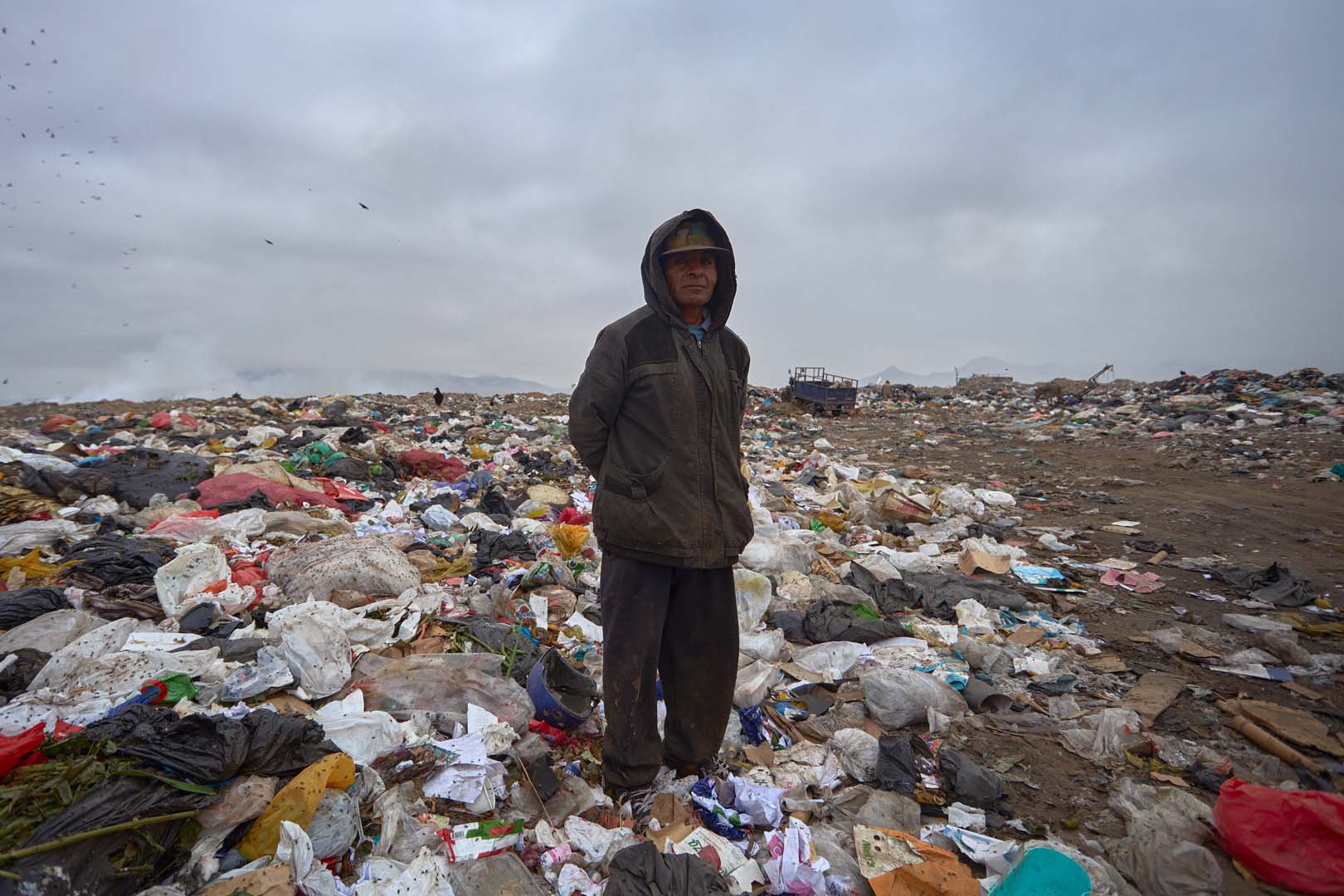
The day I spent the longest time with the waste collectors, I saw how Segundo chopped the plastic bags with his hands and separated the garbage into four groups. The first was organic waste, such as fruit peels or leftover food, stored in a bucket and then sold as food for pigs or plant fertilizer. The other three groups were scrap metal, plastic, and cardboard— one kilo of plastic costs S/1 ($0.26 USD) or S/1.70 ($0.44 USD). In contrast, scrap and cardboard sell for much less, between S/0.50 ($0.13 USD) and S/0.30 ($0.08 USD). Segundo told me he could collect as much as 100 kilos of scrap metal daily.
Francisco and the other waste collectors - men and women - used the same method to separate the garbage. While working, some preferred to listen to music to shut off the noise of the strong wind, but most chatted and made jokes while working. They did not seem distracted by the smell of decay, flies, or buzzards circling. However, they were uncomfortable with their photos being taken; they appeared to be fed up with journalists who have come here all these years to ask questions.
"What if they close the dump? Do you know this is illegal? Who burns the garbage?": These are some of the questions waste pickers have been asked many times. However, none of them knows that in 2021, a total of 355,312 tons of garbage were dumped on their site, as opposed to 1,057,769 tons the year before, according to data from the Minam. The latest OEFA report published last June says that some 300 tons of waste were dumped daily, including small furniture, office supplies, masks, textiles, and industrial materials.
These figures may not be the same now that the municipal trucks no longer come to the dump. However, I can see new garbage on the site from the gate where I am standing, and waste collectors are still working.
Failed promises
In mid-2011, a group of Swiss citizens toured the Reque dump and told mayors, journalists, and waste collectors that they were interested in turning it into a proper waste disposal space comparable to those in other countries. Cristian Robin, head of the Swiss Confederation in Peru, explained that the idea was to promote recycling and formalize the work of waste collectors. "We would like to offer them a more dignified work opportunity in a healthier environment," he said.
On April 5, 2013, the Provincial Municipality of Chiclayo -represented by the then mayor Roberto Torres Gonzales-, the State Secretariat for Economic Affairs of the Swiss Confederation (SECO), the Peruvian Agency for International Cooperation, and the Ministry of the Environment, signed an agreement to develop a project known as "Chiclayo Limpio (Clean Chiclayo)."
In 2014, a few days before Christmas, the media reported that Mayor Roberto Torres had been captured by the police and taken to prison on charges of money laundering, criminal conspiracy, and other crimes. Despite the scandal, the Swiss Confederation decided to go ahead with the project with the new mayor, David Cornejo Chinguel. In addition, the Confederation financed the purchase of 23 vehicles for collecting and transporting garbage to the dump. Francisco recalls that the Swiss Confederation trained waste collectors and offered money to the older ones to compensate them for their years of working. "We, younger and still able, would continue working but with formal conditions," he told me.
The following steps planned by the Swiss Confederation were to build a waste transfer station, where the municipality's trucks could move the garbage to a larger vehicle similar to a trailer and from there to a landfill. Each trailer would represent the equivalent of six or eight garbage trucks. Disposal of all the city's waste would be done legally and responsibly.
"Transfer stations are used to lower transportation costs. For example, twenty municipal trucks in Chiclayo, coming and going to and from Reque, generate a cost in gasoline and time that could well be used to collect more garbage in the streets and homes. In addition, these stations save trucks from having to go to a big trailer," explains Marcos Alegre Chang, engineer, and president of the GEA Group. This company provides advice on sustainability and the environment in Peru.
The project suddenly stopped after another corruption scandal. In 2018, on Christmas Eve, Mayor David Cornejo was also arrested on charges of having favored tenders for public works in exchange for money. One of the witnesses in the case was businessperson Mirtha Gonzales Yep. She had appeared in a Sunday television program to denounce that the Constructora CRD SA Sucursal Perú, a company of which she was a commercial advisor, had paid bribes to win the tender for the construction of a waste transfer station.
The contract established a payment of more than S/10.000.000 ($2,585,900 USD) for the work, but by February 2019, the construction company had only built less than 30 percent of the waste station. As a result, the Swiss Confederation decided to stop financing the "Chiclayo Limpio" project. However, once it withdrew its stake from it, it recovered S/11.360.387 ($2,937,387 USD), while the municipality still holds a debt of S/2.024.672 ($523,612 USD) for outstanding balances.
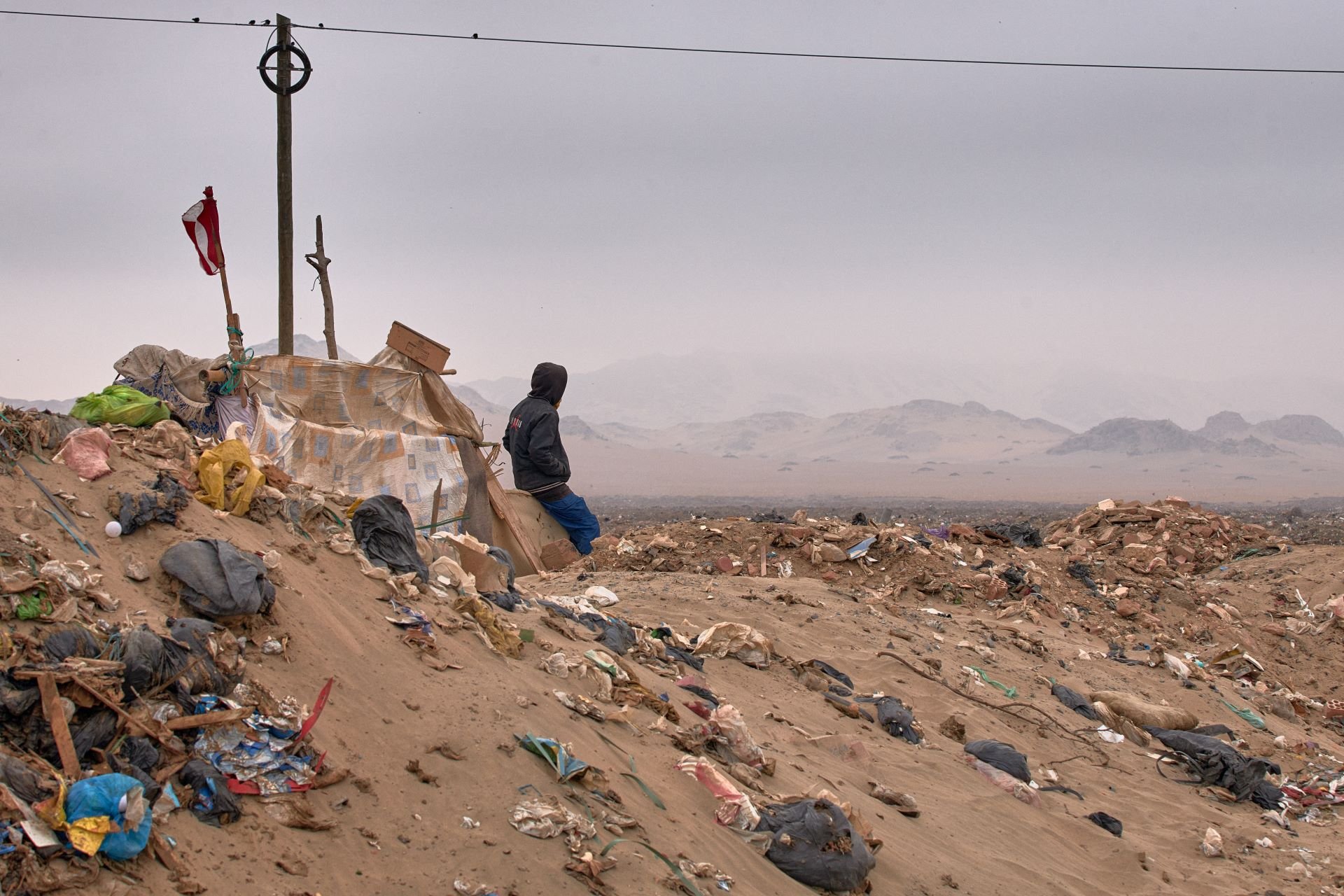
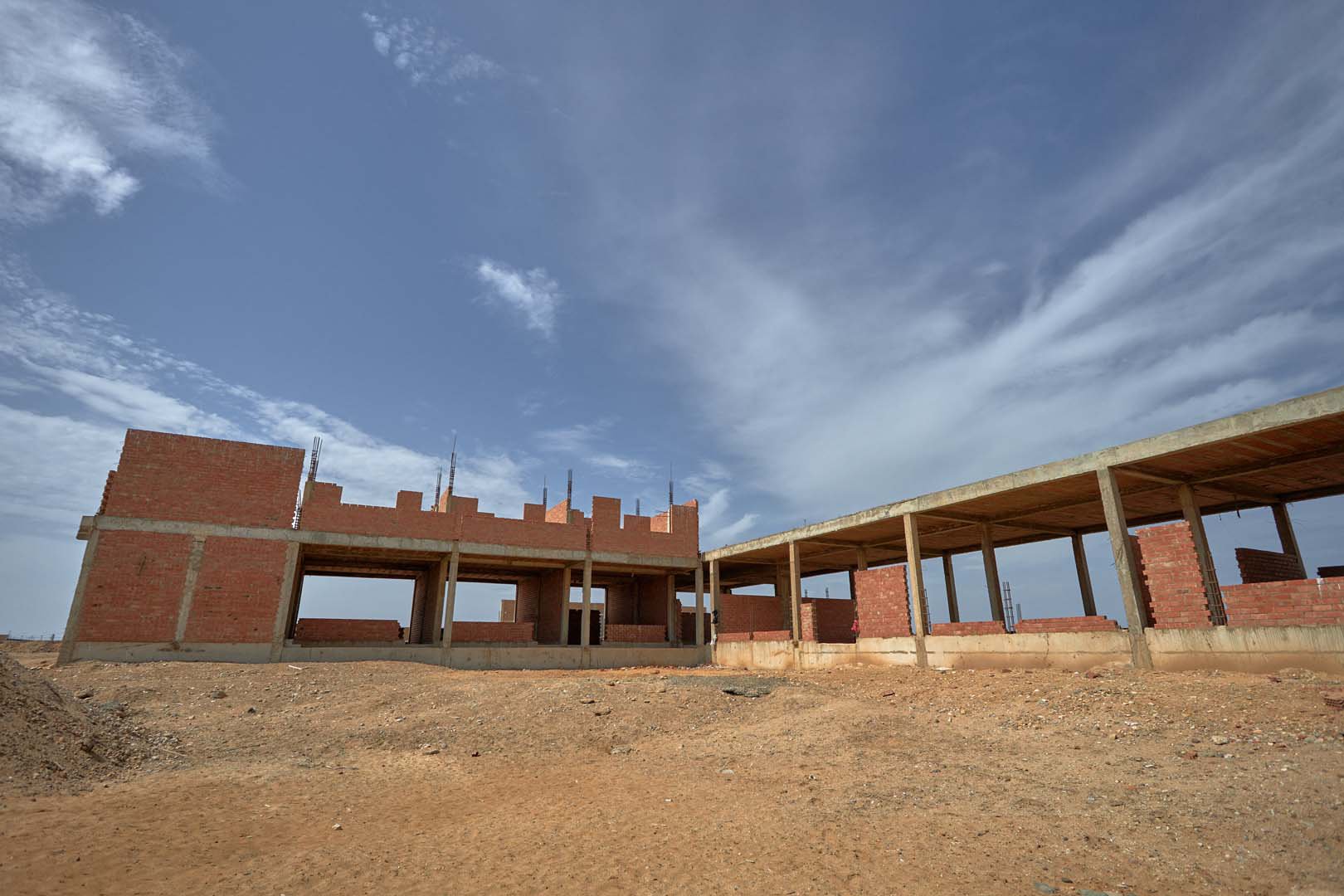
Nowadays, it is used as a space to burn garbage. After an hour of walking through the area, two men on a motorcycle approach me. They wear casual clothing - jeans and polo shirts; it is hard to believe that the Chiclayo municipality had hired them to look after the abandoned site.
However, a moto-taxi driver passing by tells me they are the only ones guarding the area. He calmly explains that he built a house there, alongside several other people who invaded the land during the pandemic. "Back then, there was a lot of construction material left -iron, bricks, etc. - but they have taken it away. At some point, there were houses here, at least a thousand families living here," he says. The two men on the motorcycle admit that people invaded the land twice, but they do not know how the local authorities reclaimed it.
I see a few concrete walls at the construction site with no roofs and a staircase. I try to imagine, to no avail, what the space would have looked like. Then, I think of the images the municipality showed in a presentation: extensive premises with a two-story building and trucks coming in and out of the site. Failure to build the station thwarted the Swiss Confederation's plans to turn the Reque dump into a landfill. However, the authorities continued to believe that excessive waste could only be solved with a lot of investment.
A second attempt
The Minam paid more than S/10.000.000 ($2,585,900 USD) for a new project -the construction of a transient cell a few kilometers from the dump, although this has not solved the pollution generated by garbage. A transient cell allows waste to be encapsulated and buried underground to prevent it from emitting harmful gasses into the air and soil. Its creation was possible because the ministry declared a state of emergency in five of the districts that used the dump. In 2019, the Peruvian Air Force donated 400 hectares of land to the municipality of Chiclayo. The entire transient cell system currently occupies 10 percent of that area.
The Fukuoka method, developed in Japan initially for agriculture, helps the system reduce methane production, a greenhouse gas. "Methane is one of the gasses that have the greatest impact on the environment. One methane emission equals 23 carbon emissions," engineer Marcos Alegre explains. Chimneys in the cell capture the gasses that produce waste when they decompose, thus reducing pollution to the soil and air.
Its ten hectares of extension resemble an open sardine can, whose bottom is covered by a geomembrane, similar to a black plastic bag. All the space is divided into quadrants; each used to throw away the garbage. The garbage has to be crushed using a caterpillar tractor to accumulate as much waste as possible. When the trash becomes as thin and homogeneous as possible, the material extracted from the quarry, located at one end of the cell, is sprinkled to cover it completely. The whole process must be repeated with another garbage batch to avoid exposure.
"Let's say they leave a layer, a link between (...) And when done, it is ready to receive new waste. But first of all, one has to ensure that there are no plastic bags or buzzards outside and that the number of flies is reduced to a minimum," says Paola Zabarburú Belloso, head of OEFA in Lambayeque, while trying to illustrate the operation of the cell.
Gino Chanamé Díaz, an official from the Municipality of Chiclayo, admits that all the quadrants of the cell are already filled with a first layer. Sitting in a small office in the municipality headquarters, the biologist says they can complete two more levels in a year and a half. Paola Zabarburú believes the cell will stop working in three years. She has more than one argument to back up what she says. Perhaps the most important one is the project's setbacks since it started in May last year.
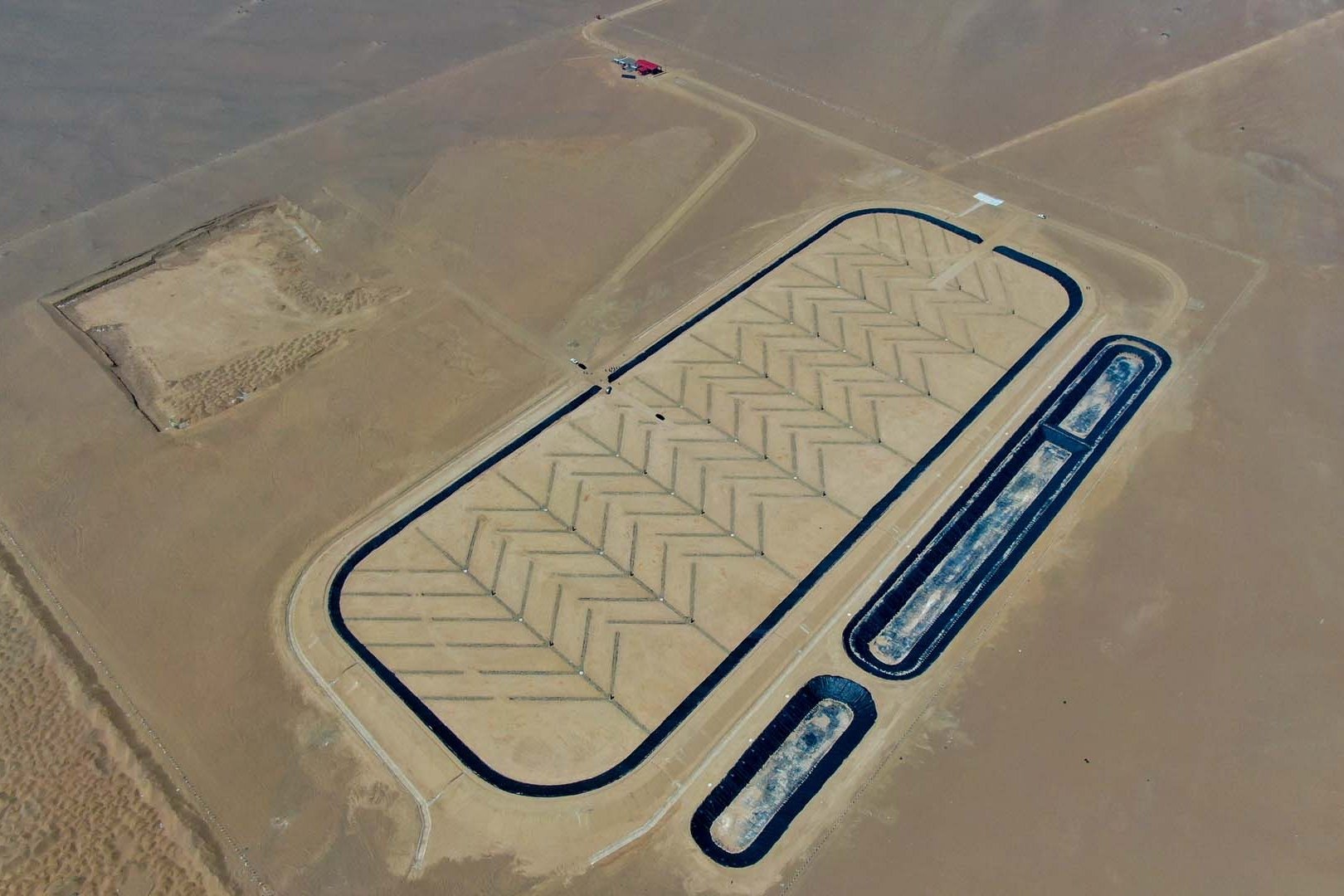
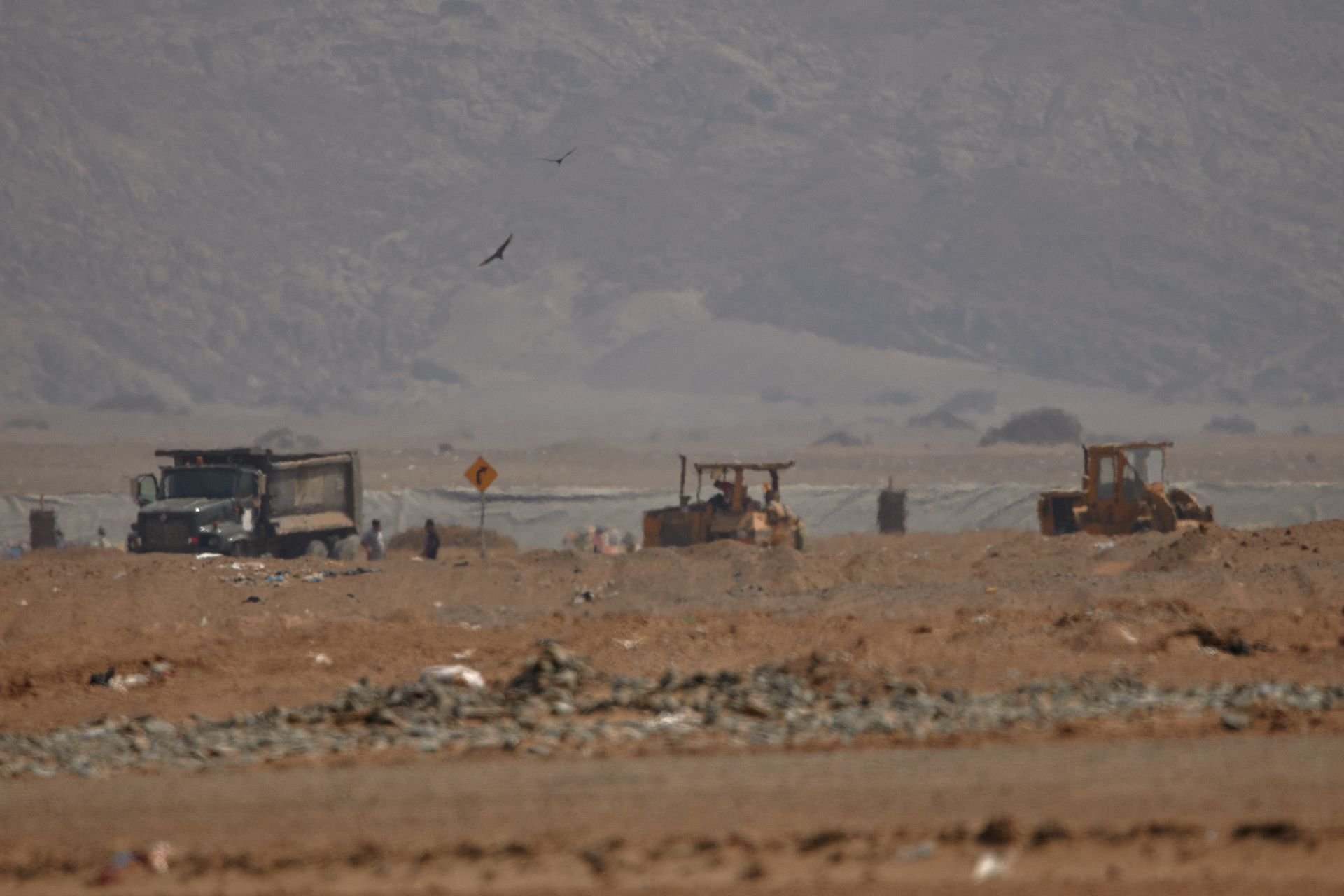
During the first ten months of the project, the cell was used only by the Municipality of Chiclayo, but it did not have enough vehicles to encapsulate the garbage. According to a document signed by the police and a justice of the peace on October 27, 2021, an inspection found that the cell was closed and without personnel. Months later, a team from the Comptroller's Office verified that only one truck tractor was working, with the second in need of repair. The Comptroller's report recommended buying two or three additional tractors, a roller-compactor, two front-end loaders, two dumping trucks, and two skid-steer loaders to fulfill all cell operations.
Gino Chanamé argues that Minam's investment plan did not include the purchase of caterpillar tractors or other machinery, leaving the municipality to bear the cost. "We had to locate a track tractor that was ours and make it operative again. That tractor had been idle for ten years. When you fix an old machine, it doesn't work 100 percent; new faults can come out. All of this affected our operation," he admits.
"A new track tractor is not cheap. We are talking about S/500.000 ($129,320 USD) approximately. A front charger costs S/200.000 ($51,728 USD)," he adds. The municipality preferred to buy ten compactors to collect the garbage left on the streets instead of new machinery for the cell.
The municipal official also argued that the material in the quarry was useless. After spreading it on the garbage, neither the caterpillar truck nor the rollers could press the waste together tightly. Chanamé says this was due to a project design problem and holds the Minam responsible for it. For now, the municipality has already found a solution by replacing this material with soil and sandy clay from the Panamericana Norte road.
In any case, last April 19, a month after the districts of José Leonardo Ortiz, La Victoria, Reque, and Zaña were able to enter the cell, a tour of the area showed that the garbage was not being compacted due to the lack of truck trucks and appropriate materials to cover it." At the rate it is working, by the end of this year, it will have collapsed," warned a document signed by three of the municipalities involved.
OEFA also found that the cell had become another dump. "Solid waste was not scattered, compacted, or covered," says Paola Zabarburú, OEFA's regional director. In addition, there was another inconvenience. "The idea is not that all the waste goes to the cell, but just a small part. To that end, municipalities should implement the source segregation program or encourage a circular economy. It is the way to guarantee that the cell's life reaches three years," says Zabarburú. Unfortunately, segregating the garbage, that is, grouping it by its origin or characteristics, is something that the municipalities do not do either.
I tried to talk to two of the mayors who, at some point, advocated for the proper use of the cell, but they turned down my request for an interview. Then, last June, my attempts to enter the transient cell station also failed, although I was accompanied by two city councilors from the Municipality of Chiclayo. On that sunny morning, I saw hundreds of plastic bags tied to the site's fence and flies flying around it. According to some specialists I interviewed, the bags probably ended up entangled in the wall due to the mishandling of the transient cell.
Amid the chaos, the Reque landfill continued open. The municipal trucks kept dumping waste there. According to data from Minam, between 2019 and 2021, a total of 1,657,965 tons of waste were left in Reque. Marcos Alegre warns that even today when the dump is supposed to be closed, it generates methane because of all the organic waste buried or left in the open.
For more than 40 years, scientists have shown that greenhouse gases, such as methane and carbon dioxide (CO2), cause climate change and glacier disappearance. Still, no Lambayeque authority is discussing how to stop methane emissions in Peru's largest landfill.
Is anyone thinking of the future?
In 2021 alone, Lima generated ten times more garbage per household than the Lambayeque region. Still, none of the 85 municipal waste dumps in the Peruvian capital exceeds the volume managed by the Reque dump. The president of the GEA Group considers Reque the oldest landfill in the country. "Here in Lima, there were several dumps by the Rímac and Chillón Rivers. Many years ago, in Chorrillos, there was another dump, but they all closed. And those were the oldest in Lima," he said.
In the OEFA archives from the last five years, there is not a single report on Environmental Monitoring at the Reque dump. The most recent one was published in December 2015, and it recommended the closure of the land and a plan to recover all the areas affected by poor waste management. The report also mentioned that more than 70 percent of the waste dumped at Reque had been burned. According to Minam, incineration accumulates more garbage by reducing its volume. However, the dark and smelly ashes that remain in the soil have irreversible effects on the air quality due to black carbon emissions (BC), a pollutant that contributes to climate change.
A study published in 2018 by the scientific journal Environmental Research suggests that burning garbage in the open could be the reason why people in rural communities in Mexico have more respiratory problems. The research also refers to previous studies that link exposure to black carbon with potentially serious health risks such as cardiovascular and chronic respiratory diseases and premature deaths. However, in Peru, no research is available on the damage to people’s health caused by the incineration of garbage in illegal dumps such as Reque's.
Some waste collectors say incineration helps recover metals from garbage like copper, bronze, and aluminum. But, sometimes, the municipal trucks unintentionally throw pieces of material still smoking, setting other waste nearby on fire. Segundo Carrero asks people not to blame waste collectors for burning garbage. "We know burning pollutes the environment. We have tried to put the fire out on several occasions, but with the wind blowing, it is impossible. If a bag catches fire, it extends ten meters away in thirty seconds. Before, the garbage at the back of the dump burned a lot. We would call the firemen, but nobody ever came," Segundo explained.
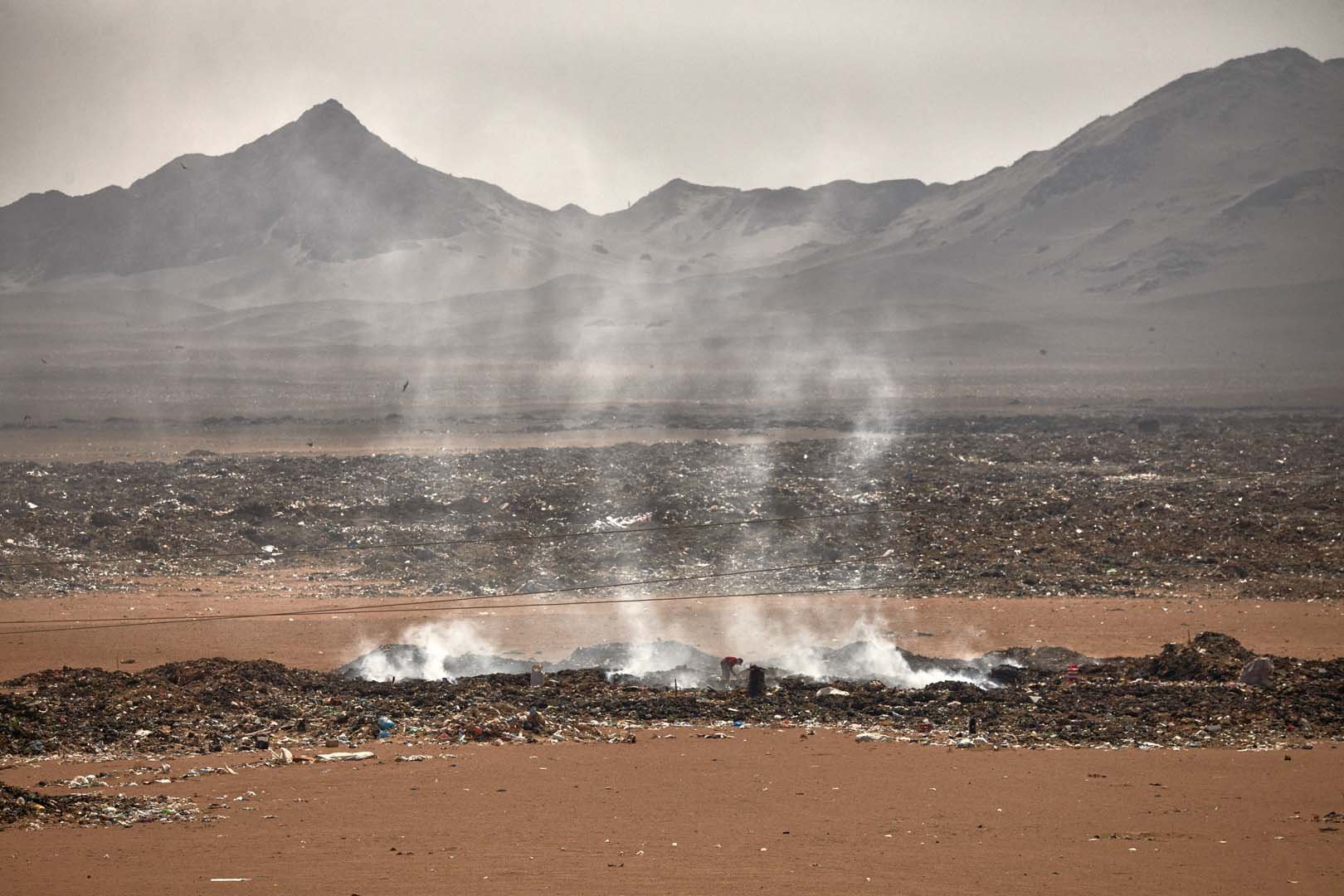
Segundo and Francisco do not remember having suffered any diseases in all the years they have worked in the dump. However, an OEFA monitoring report published last May suggests that working in a landfill can affect the health of waste pickers and truck operators. Seven years ago, the results of the sample tests taken from the dump and included in the Environmental Monitoring Report that recommended its closure showed that the levels of carbon monoxide, sulfur dioxide, and nitrogen dioxide far exceeded the Environmental Quality Standards (ECA).
The OEFA report also indicates that the cadmium, chromium, and lead levels exceed the acceptable parameters. It reveals that the soil in the dump cannot be used for agriculture or other productive activity.
Marcos Alegre and Paola Zabarburú agree that a new environmental monitoring analysis would find higher soil and air pollution levels. However, the decision to carry out a new study lies with OEFA. What is more uncertain now is what can be done to recover the degraded land.
The Law on Integral Solid Waste Management stipulates that the Provincial Municipality of Chiclayo is the entity responsible for implementing the recovery of these degraded areas, with the support of the districts of José Leonardo Ortiz, La Victoria, Reque, and Zaña, all of which have used the dump for years. Because the Reque landfill is not the only one in the country, on July 12, 2019, the Minam launched a technical guide to help provincial municipalities develop their recovery plan.
The plan should include an introductory study of the affected area and an investment project that considers the handling and containment of waste and the management of toxic gasses. Last January 19, the Municipality of Chiclayo told OEFA that waste collectors would have to be evicted to start such a plan. Paola Zabarburú, OEFA's representative, warned that such a proposal does not conform to the technical guide and questions the municipality's intentions.
In his defense, Gino Chanamé said that the municipality's intention was no other than to encourage the other local governments involved to stop sending their trucks to the dump and do so instead to the transient cell station. To him, that would be the starting point to complying with the closure and recovery plans. However, the dump is not completely closed yet, because the municipality and waste collectors have not reached an agreement with the waste pickers about leaving the site. Without that, it would be challenging to implement any recovery plan.
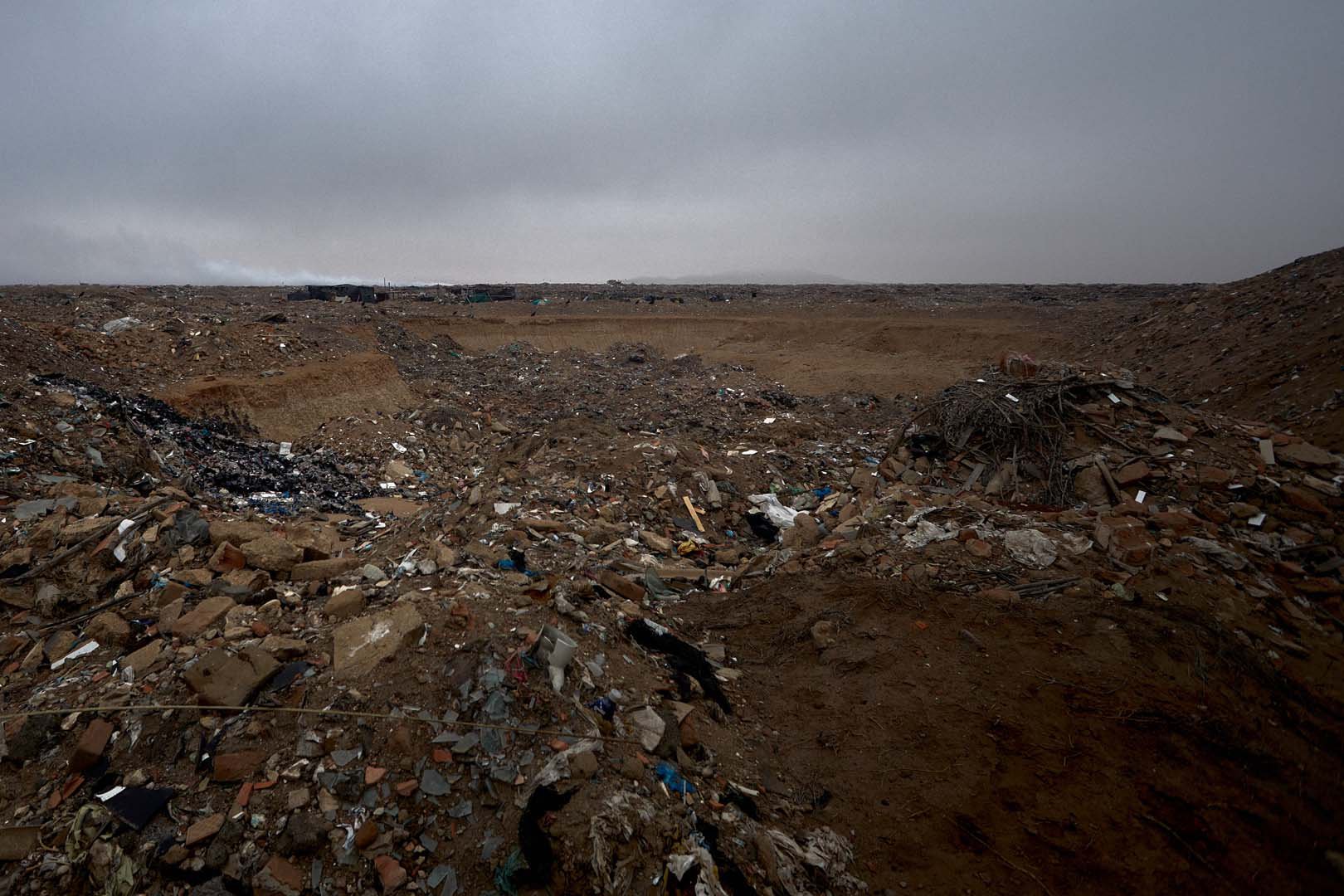
But what does the municipality propose to do if it manages to regain control of the dump? Gino Chanamé replied that they would fly over the dump site with drones to identify the points where there is more garbage accumulated. After that, the waste will be "insulated" to cover it with sand and other materials. The result, he said, would be the conversion of the dump into arid soil.
Engineer Marcos Alegre, who was Deputy Minister of Environmental Management between 2016 and 2018, mentioned that the municipality should consider a special cover for the waste, something resistant to the strong winds in the area. He believes that this strategy would help ensure no plastic bags are left on the ground, something that in the future could pose an environmental risk to animals that may confuse them for food. The other components of the recovery plan should include the control of vectors such as rodents and flies, the installation of chimneys to remove methane and other gasses, and gutters for leachates, which are the harmful and poisonous liquids that are the result of combining water with decomposed waste.
On this last point, Marcos Alegre thinks it is crucial to find out if there is groundwater underneath the dump to prevent its contamination. "Pollution is reaching deeper depths below the ground, and although groundwater lies well below, pollution could get there in 20 or 30 years," he explained.
The former deputy minister believes the recovery process could take a whole year, with environmental monitoring activities in place every five years. However, the Chiclayo municipality has not yet developed a proper recovery plan. According to Supreme Decree N° 001-2022 of the Minam, it has until January 2025 to present a plan to OEFA. If it does not meet the deadline, it could be punished with a fine of up to 720 Tax Units, equivalent to S/3.312.000 ($856,678 USD).
Gino Chanamé says the waste collectors had requested a six-month extension to leave the dump, but the municipality did not accept it. Some of them are expected to work in the transient cell station, which is impossible because of their particular design and features. In my last telephone conversation with Francisco Sánchez, his voice sounded angry. "They want to close the dump, but we will not allow it," he told me. "How many years have we worked here?" he added. Some time ago, his work partner, Segundo Carrero, wondered if his time had come up to look for another job. "We already know that they are going to close the dump. They've been telling us the same thing for about ten years, but nothing has happened," he said.
Translated by: Mariusa Reyes. / Edited by: Julia Knoerr
This report is part of Historias Saludables, a training and support program for producing news stories about health and the environment, led by Salud con lupa with the support of Internews.
